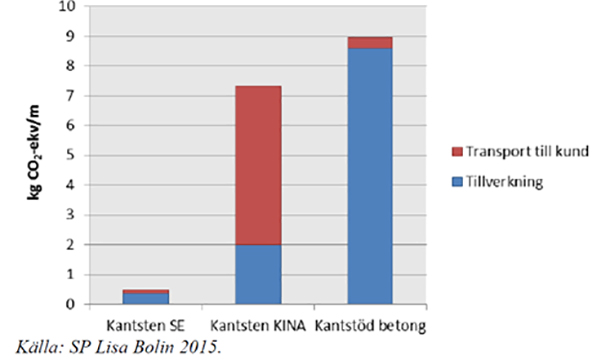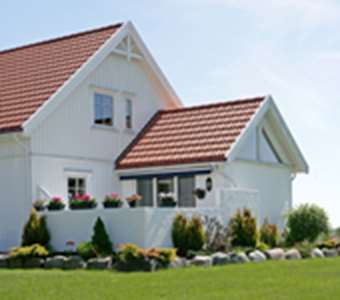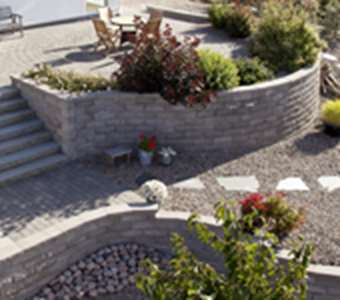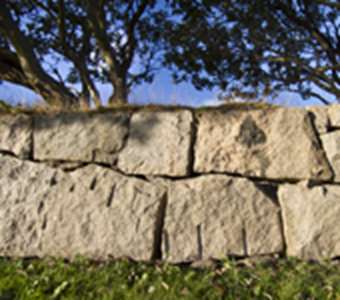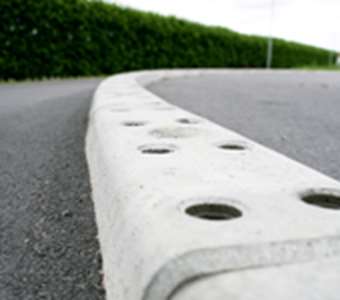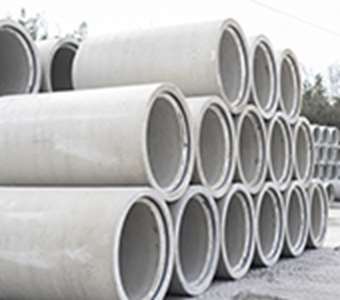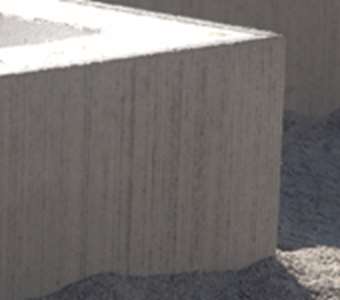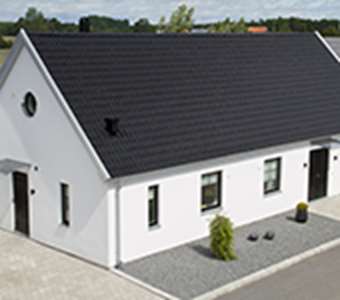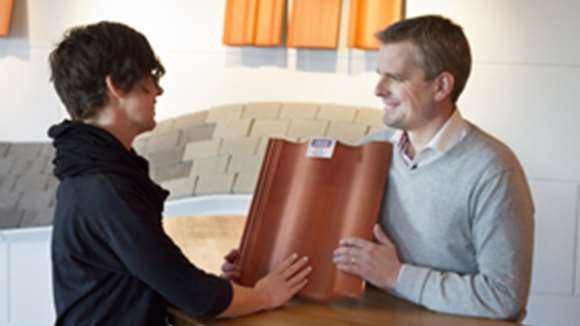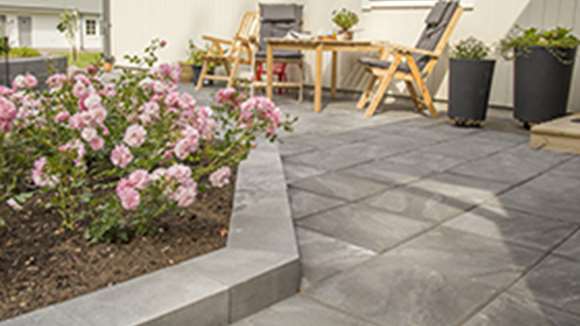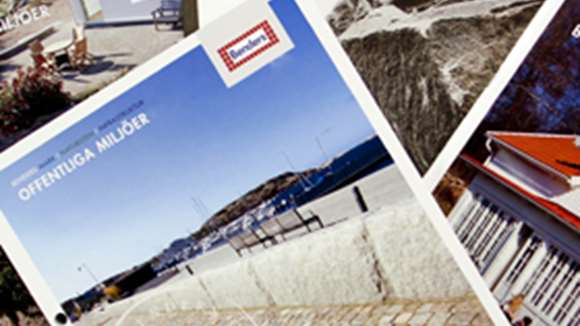We put continuous effort into developing and optimising the raw material content of our products. Besides type and quantity of raw materials, this also covers transport. Aggregate, cement and water are by far the raw materials that Benders uses most.
Amongst other initiatives, new roof tiles have been developed. Although these have 5% less concrete, the strength is the same. This gives an overall reduction in raw material consumption. Similarly, our new paving stone factory in Uddevalla makes a thinner product that has the same strength as its traditional equivalent. Our Gräsarmering Delta 60 mm, a paving stone that uses an open-cell solution, withstands high traffic loads despite its thinness. It is thus light and, both economically and environmentally, a smart choice.
Cement
Our use of cement is the prime negative environmental impact of our products. From raw material to finished item, a good 90% of our products’ CO2 emissions are attributable to the cement. Carbon dioxide is released in cement production. Emissions from Sweden’s three cement factories equate to approximately 2 – 3 percent of the country’s total carbon dioxide emissions.
However, the finished concrete also takes up carbon dioxide. This process is called carbonatation and entails carbon dioxide in the air reacting with the concrete’s calcium hydroxide to form calcium carbonate. It can be likened to the concrete returning to its limestone origins. Research shows that the concrete structures currently in Sweden annually take up around 300,000 tonnes of carbon dioxide. This equates to approximately 15 – 20 percent of the carbon dioxide emissions.
By improving recycling and carbonatation after demolition, this figure can most probably be multiplied. Development within research is also contributing to clarifying the true impact of carbonatation.
Cementa, Benders’ sole cement supplier, is one of Europe’s most “environmentally efficient” companies in this industry. For example, it has a vision of being climate neutral by 2030. The vision entails zero carbon dioxide emissions during their products’ life cycles. Contributing to turning the vision into reality will be measures such as: new cement types; research into carbonatation; and, new technologies for carbon dioxide separation, storage and use.
In addition to working with Cementa, a reduction in CO2 emissions can be achieved by replacing tiny percentages of the cement with alternative binders such as slag.
Aggregate
Natural gravel is a finite resource. Ridges and other deposits left by subglacial streams are very important as regards drinking water supplies and the cleaning of surface water via forced infiltration. Sweden’s government has thus decided that extraction of natural gravel should be minimised. Recycled material, crushed rock and glacial till are to be used as replacements.
This is why Benders is working on using crushed material to reduce its consumption of natural gravel. Some of our facilities use only crushed material while others are actively endeavouring to further reduce their use of natural gravel. The approximate percentages of materials that the group used for aggregate in 2020 is shown on the right. Using crushed aggregate is easier for paving stones than it is for roof tiles. This is because crushed aggregate is sharper and more angular than natural gravel. These properties create problems at the “clipping” stage of roof tile manufacture.
Table showing increasing use of crushed aggregate
|
Year |
Crushed aggregate percentage |
| 2017 | 36% |
| 2018 | 37% |
| 2019 | 41% |
| 2020 | 53% |
In addition to the work with the types of aggregate used in our products, we are also working on transport routes from aggregate quarries to factories being as short as possible. This is advantageous both economically and environmentally. Where aggregate has to be carried a long way, trains are used rather than lorries.
Water
Most of our facilities have closed systems to reuse all their production’s process water. The goal is that all water shall be reused in the production processes. Out of 14 concrete production facilities, 12 reuse their process water. At the two facilities that do not, work to enable reuse is ongoing.
Granite
In addition to our concrete offerings, we also make construction products from Sweden’s Bohus granite. This lasts from generation to generation and becomes more beautiful with each passing year. All granite extracted for manufacture is used; mainly for construction products, but also as aggregate.
In procurements, it is becoming increasingly common for large customers and public bodies to impose requirements in respect of the total CO2 emissions of products. Viewed from a life cycle perspective, Swedish granite kerb stones (for example) have very low emission values while Chinese kerb stones and Swedish concrete kerbing have considerably higher values. In many cases, only Swedish produced granite can satisfy the low emission requirements. Furthermore, the high quality of Bohus granite means that the products have long service lives. This entails even greater advantages when our granite is compared to concrete and certain imported stone.
Around 70 – 80% of Sweden’s demand for granite products is still satisfied through imports. However, by using new technology and a high level of mechanisation, we can meet customers’ requirements. More customers can then choose Swedish granite. The increasing imposition of environmental requirements on construction materials is strengthening the position of natural stone. This is largely due to the latter’s long service life and relatively low energy consumption in production and transport.
Table 4: Examples of differences in CO2 equivalents per metre of similar products
